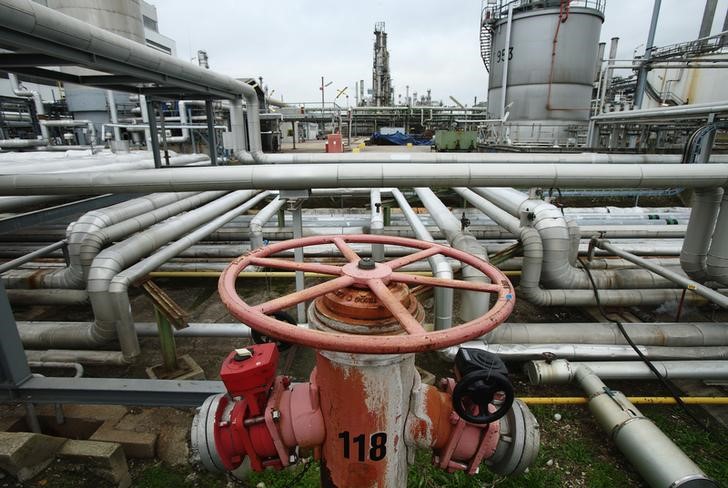By Geoffrey Smith
Investing.com -- Crude oil prices hit their highest levels since early March on Tuesday, amid further signs that the Organization of Petroleum Exporting Countries is ensuring that everyone who signed to its deal on output restraint actually complies with it.
OPEC had given signatories to the pact until this week to submit detailed plans of how they will cut current production to compensate for having produced above their quota in May, violating an agreement to hold a total of 9.7 million barrels a day of crude off world markets.
Newswires reported that Iraq and the African nations of Nigeria, Angola, and Gabon have now all submitted their plans. Countries led by Russia and Saudi Arabia had insisted on such measures in return for their support in extending the current level of output cuts.
The commitments from the compliance laggards improve the odds of the physical market coming back into balance this month, having shifted sharply into surplus as global demand collapsed in response to lockdowns across the world.
By 9:20 AM ET (1320 GMT), U.S. crude futures were up 0.9% at $41.09 a barrel, having earlier hit an intraday high of $41.62 a barrel. Brent futures, the international benchmark, were up 0.9% at $43.48 a barrel.
But commitments to pump less have not always been honored in the past, and some doubt they will be this time either.
“Iraq has vouched to cut production for July-August to 3.5 million bpd, or 1.3 million bpd below its 2019-average. We remain skeptical this acrobatic feat can be accomplished in such a short time frame,” said Bjornar Tonhaugen, head of oil markets at consultants Rystad Energy, in emailed comments. He pointed to the fragmented operating structure and difficult political conditions in Iraq that have made coordinating production hard for a country that is OPEC’s second-largest producer.
Elsewhere Tuesday, the American Petroleum Institute will present its weekly update on U.S. crude oil inventories, against a backdrop of growing concern of rising coronavirus infections across the U.S. – not least in big oil producing states such as Texas and Oklahoma.
